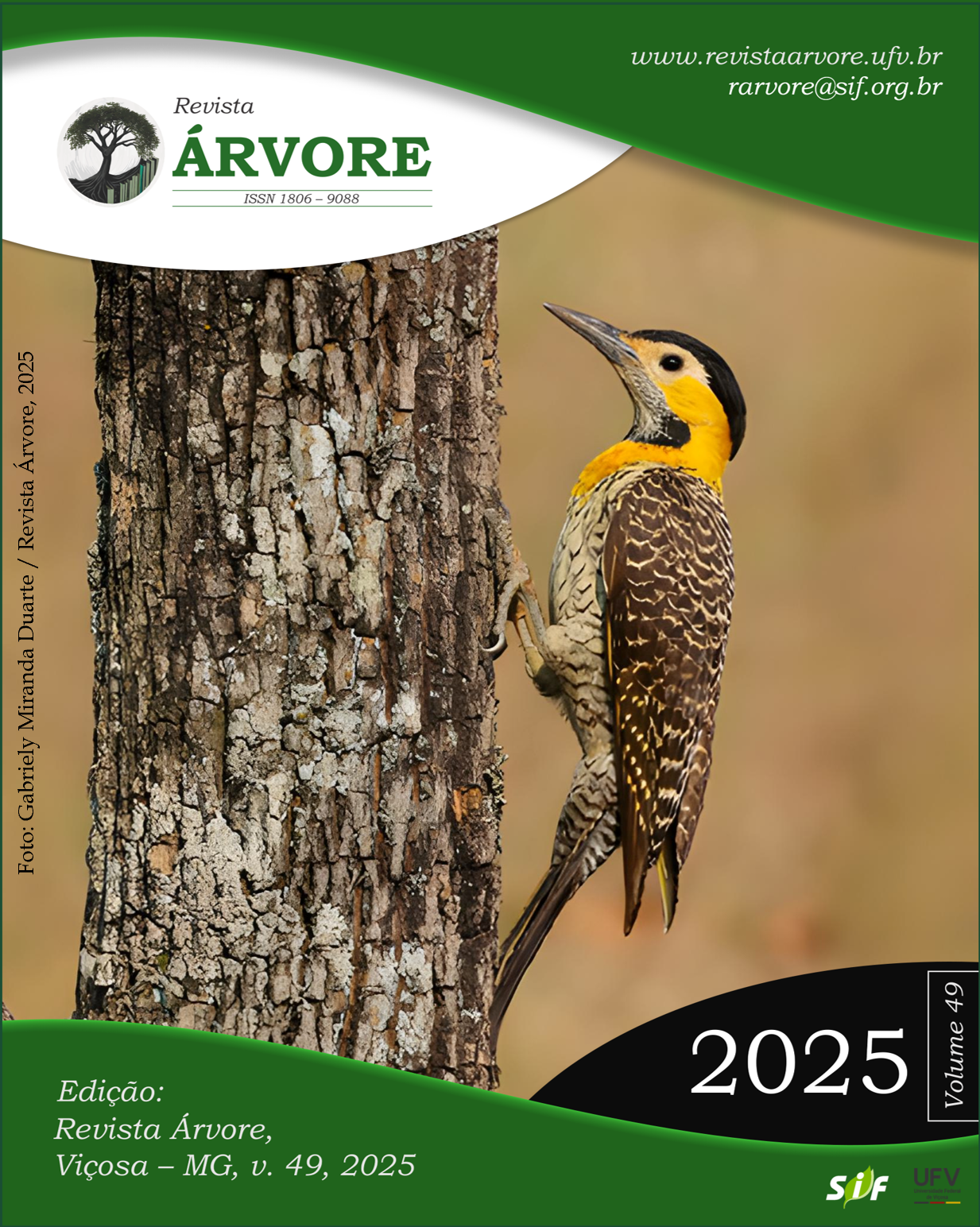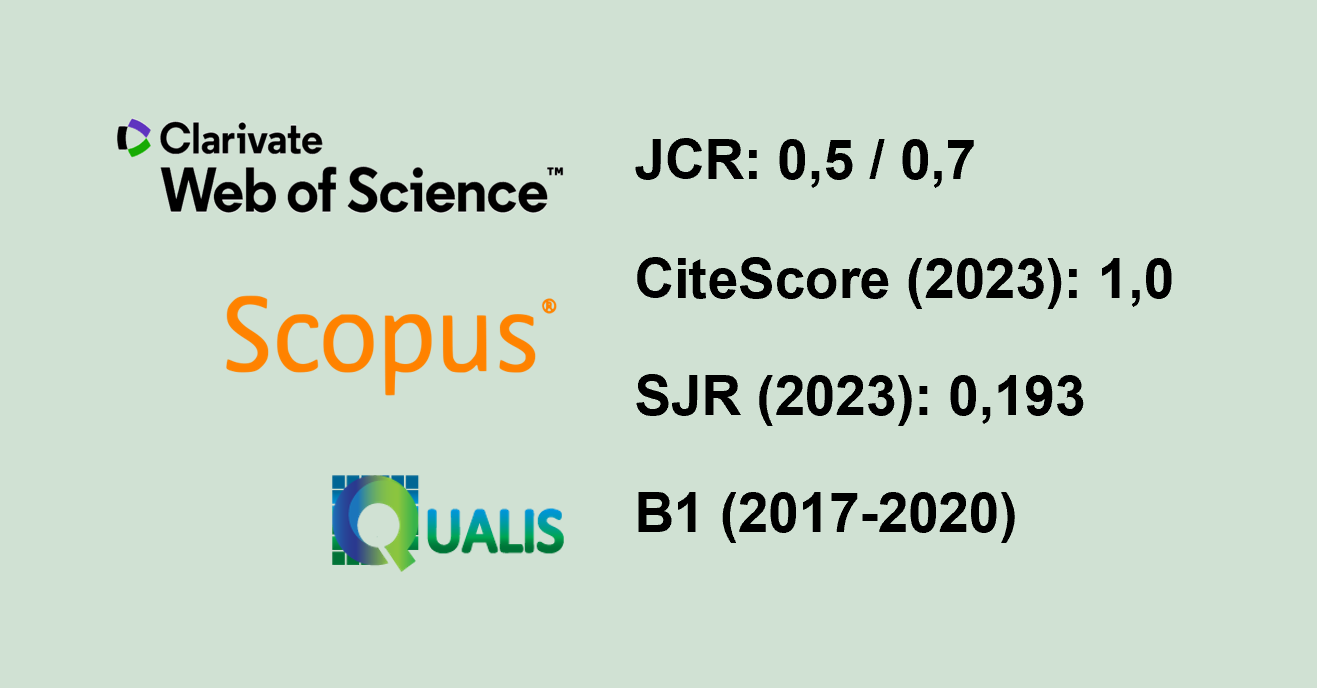The effect of the tube volume and alternative substrates on the production of native seedlings
DOI:
https://doi.org/10.53661/1806-9088202549263920Keywords:
Ecological restoration, Dickson quality index, SilvicultureAbstract
The production of seedlings of fast-growing native species in unfavorable areas is essential for the ecological restoration, making it crucial to evaluate the responses of these species to different substrate compositions and tube sizes to optimize the seedling production. Thus, the objective was to evaluate the seedling production of Vernonia polyanthes Less., Solanum paniculatum L., Baccharis dracunculifolia DC. and Solanum lycocarpum St. Hil. using different substrate compositions and tube volumes. Three substrate formulations were evaluated, consisting of commercial substrate, coconut fiber, carbonized rice husk, and cattle manure in different proportions, combined with two tube volumes (55 and 110 cm³). The experiment followed a randomized block design with treatments arranged in a 3 × 2 factorial scheme (substrates × tube volumes). The seedlings were assessed by measuring height, stem diameter, and dry matter, in addition to calculating the height/diameter ratio, shoot-to-root ratio, and Dickson quality index. Superior results were obtained with the 110 cm³ tube compared to the 55 cm³ tube, the seedlings of V. polyanthes, S. paniculatum, B. dracunculifolia, and S. lycocarpum achieved Dickson Quality Index (DQI) averages of 0.97, 2.12, 0.37, and 2.01, respectively. The substrate composition distinctly influenced the development of each species. For S. paniculatum, any of the tested substrates proved suitable, whereas for V. polyanthes and B. dracunculifolia, a substrate containing 15% cattle manure was more favorable. In contrast, S. lycocarpum performed best with 30% cattle manure. It is concluded that high-quality seedlings of the four studied species can be produced using 110 cm³ tubes and alternative substrates.
Keywords: Ecological restoration; Dickson quality index; Silviculture
Downloads
Published
How to Cite
Issue
Section
License
Copyright (c) 2025 Revista Árvore

This work is licensed under a Creative Commons Attribution 4.0 International License.
All authors agreed to submit the work to Revista Árvore and granted the exclusive license to publish the article. The authors affirm that it is an original work and has not been previously published elsewhere. The scientific content and opinions expressed in the article are the sole responsibility of the authors and reflect their opinions, not necessarily representing the opinions of the editorial board of Revista Árvore or of the Society of Forest Investigations (SIF).








